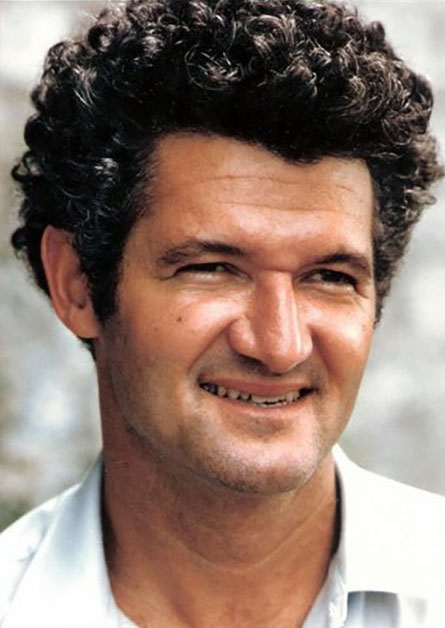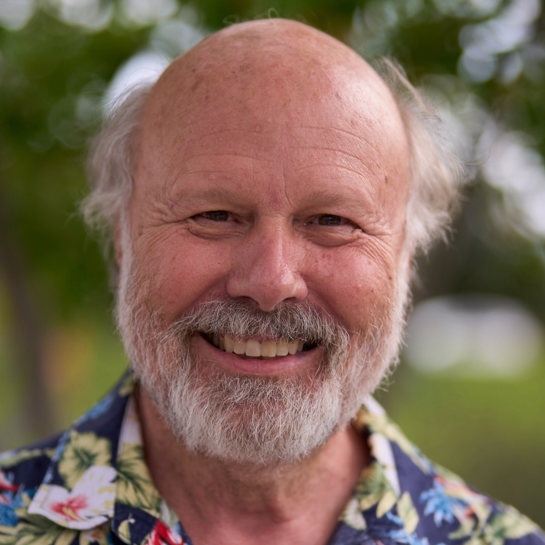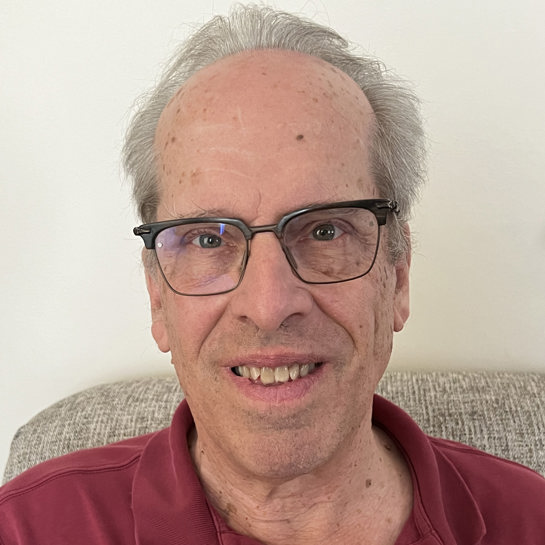Obituary: Peter David Lax

Peter David Lax, a pioneering figure whose groundbreaking work profoundly shaped computational science and applied mathematics, passed away on May 16, 2025, at the age of 99. His death marks the end of an extraordinary career that established foundational principles in the mathematics of fluid dynamics, shock waves, scattering theory, integrable systems, and numerical methods for the solution of partial differential equations.
Biography
Born in Budapest, Hungary, on May 1, 1926, Peter showed mathematical promise from a young age. His family fled Nazi persecution and took the last boat from Lisbon to New York in November 1941, arriving just days after the attack on Pearl Harbor. This timing placed a teenage Peter in the U.S. during a transformative period for applied math. His talent quickly caught the attention of influential mathematicians — including John von Neumann, who became a major influence on Peter’s career.
At 18 years old, Peter was drafted into the U.S. Army and assigned to the Manhattan Project at Los Alamos National Laboratory. This early introduction to interdisciplinary collaboration thoroughly shaped his mathematical perspective. “It was the experience of being part of a scientific team—not just of mathematicians, but people with different outlooks—with the aim being not a theorem but a product,” Peter later said. “One cannot learn that from books; one must be a participant.”
The Los Alamos environment was intellectually electric. Peter even played tennis with Enrico Fermi, recalling with characteristic humor that “I won six to four. He pointed out that the difference, two, was the square root of four, and therefore it was a random deviation.” Such anecdotes illustrate the blend of serious science and intellectual camaraderie that influenced Peter’s approach to mathematics.
During this period, Peter’s intellectual force was shaped by his close proximity to mathematical giants. “People today have a hard time to imagine how brilliant von Neumann was,” Peter once said. “If you talked to him, after three words, he took over. He understood in an instant what the problem was and had ideas.” This exposure to mathematical prowess at a young age defined Peter’s own approach to problem solving and collaboration.
After the war, Peter finished his education. He earned his bachelor’s degree at New York University (NYU) in 1947 and completed his Ph.D. just two years later under the direction of Kurt Friedrichs. He remained at NYU’s Courant Institute of Mathematical Sciences for his entire career and served as director from 1972 to 1980. Peter also maintained a connection with Los Alamos despite the distance, returning regularly as a consultant and summer researcher.
Research Contributions
As a whole, Peter’s research significantly advanced our scientific understanding and computational capabilities in several critical areas of applied mathematics. In the 1950s, his work centered on hyperbolic systems of conservation laws and the mathematical theory of shock waves. The “Lax entropy condition” provided a crucial mathematical framework for the selection of physically relevant solutions to nonlinear conservation laws, resolving longstanding questions about uniqueness. This work guided Peter’s formulation of the “Lax-Wendroff method” in 1960, which revolutionized the numerical computation of shock waves and became a foundational technique in computational fluid dynamics. His research with James Glimm in the 1960s further advanced the field. Peter’s exceptionally well-written paper, “The Formation and Decay of Shock Waves,” was published in The American Mathematical Monthly in 1972 and earned him the Chauvenet Prize in 1974; it continues to introduce scientists to the underlying mathematical theory in aerodynamics, weather prediction, and additional disciplines that involve fluid flow.
Peter’s other contributions to numerical analysis were equally transformative. In 1954, the “Lax-Milgram lemma” offered a simple way to show both the well-posedness of certain linear problems and the stability of linear numerical methods for those problems. The “Lax equivalence theorem” in 1956 subsequently demonstrated the equivalence of convergence and stability for linear finite difference methods that are consistent with a well-posed linear differential equation. These techniques became cornerstones of modern numerical analysis.
Peter’s famous 1957 study of the propagation of singularities for linear wave equations sparked the development of Fourier integral operators, a tool that proved both theoretically and practically useful. They comprised the setting for Lars Hörmander’s characterization of singularity propagation in the 1960s; Bjorn Engquist and Andrew Majda also used them in 1977 to develop reflectionless boundary conditions for the numerical solution of wave equations over artificial domains.
The 1960s marked the start of Peter’s decades-long collaboration with Ralph Phillips on scattering theory. Their work resulted in two books and has been applied to electromagnetic and acoustic waves, quantum mechanics, transport equations, and number theory. In the late 1960s, Peter introduced a mathematical formulation—soon to be known as “Lax pairs”—that provided a unifying framework for the emerging subject of integrable partial differential equations. When his colleague Dave McLaughlin once asked how he discovered this linear structure so quickly after learning about the complete integrability of the Korteweg-de Vries equation, Peter commented that “For many years before, I had in my desk drawer calculations of relationships between unitary flows of commuting linear operators, abstractions waiting for an application.” This story is just one example of Peter’s remarkable mathematical intuition and penchant for developing theoretical tools before their applications became clear.
Peter also clarified the relation between the Hamiltonian structure of these equations and the rich families of special solutions that they possess — i.e., solitons (special traveling wave solutions that maintain their shape), multi-soliton solutions, cnoidal waves, and hyperelliptic waves. These elegant approaches advanced pure math and influenced fields from fiber optics to quantum physics.
In the late 1970s, Peter initiated an investigation into the global characterization of the zero-dispersion limit of the Korteweg-de Vries equation — a study that inspired many works on similar limits for other integrable and near-integrable equations.
Peter’s exceptional contributions were recognized with numerous prestigious awards, including the AMS-SIAM Norbert Wiener Prize in Applied Mathematics in 1975, the National Medal of Science in 1986, the Wolf Prize in Mathematics in 1987, and the Abel Prize in 2005. He was the first applied mathematician to receive the Abel Prize, an honor that reflected his unique ability to bridge pure mathematical theory with practical applications.
Mentorship and Education
Throughout his career, Peter served as an exceptional mentor. He advised at least 55 doctoral students and currently has more than 850 academic descendants. Peter’s approach to education emphasized the connections between theory and application, encouraging students to think broadly about the potential impact of mathematical ideas. Former student Michael Ghil recalls a defining moment during his thesis defense; when Ghil proudly announced a proof that confirmed three steady-state solutions to his climate model, Peter looked at him and asked, “Why do you need a proof? Don’t you believe it?” Ghil had indeed shown him careful numerical solutions to that effect.
Peter had a cherished tradition for commemorating his students’ achievements. The “true” Ph.D. diploma was “the bottle of champagne happily imbibed after the successful defense and bearing on its label the signatures of Peter and the other Ph.D. committee members,” Ghil remembers fondly. This tradition reflected Peter’s belief in celebrating both fine work and civilized life.
The impact of Peter’s mentorship often extended far beyond formal academic relationships. Upon meeting Peter for the first time at a 1981 seminar in Stanford, Calif., Eitan Tadmor was stunned when Peter immediately invited him to stay in his New York apartment — an invitation that included Tadmor’s three-year-old daughter. This anecdote was unsurprising to Peter’s son, James. “My parents were like that,” he said. “My friends refer to their apartment as Hotel Lax.” This hospitality became legendary among the mathematical community.
Peter’s personal warmth and generosity extended to chance encounters as well. Walter Strauss recalls bringing his 12-year-old son to lunch at NYU’s Courant Institute, where Peter unhesitatingly offered half of his chocolate bar to the boy. These types of small gestures expressed his fundamental kindness and belief that mathematics should be part of the larger human community.
Peter’s approach to problem solving—which combined rigorous mathematics with physical intuition and computational methods—epitomized an interdisciplinary spirit. His remarkable textbooks on linear algebra and functional analysis reflect this paradigm. His first calculus textbook, coauthored with Samuel Burstein and Anneli Lax (Peter’s first wife and also an accomplished mathematician), published in 1976 and aimed to infuse mathematical education with computational perspectives. Peter once modestly described this book as “enormously unsuccessful” and later rethought his approach, producing two new calculus textbooks with Maria Shea Terrell. Beyond the realm of calculus, Peter’s 1973 SIAM monograph, Hyperbolic Systems of Conservation Laws and the Mathematical Theory of Shock Waves, became an influential text that educated generations of applied mathematicians.
Community Leadership
Peter was director of the Courant Institute from 1972 to 1980, vice president of the American Mathematical Society (AMS) from 1969 to 1971, and AMS President from 1977 to 1980. He served on the Mathematical Association of America’s Board of Governors from 1966 to 1967 and the U.S. National Science Foundation’s (NSF) National Science Board from 1980 to 1986.
As computers grew increasingly powerful, Peter embraced their potential and developed numerical schemes that later became standard approaches for the solution of complex physical problems. In the early 1980s, he led the influential “Lax Report,” which identified critical gaps in supercomputing capabilities at U.S. universities and argued for increased computational resources for scientific research. This advocacy shaped national policies on scientific computing infrastructure, such as the creation of the NSF supercomputer centers.
Peter’s dedication to his community extended well beyond academic pursuits. When demonstrators attempted to bomb the CDC 6600 computer center at Courant during student protests in 1970, Peter rushed into the building despite the danger.
“I could smell smoke,” he later recalled. “Two of my younger colleagues jumped in and stepped on it, while the rest of us went to the machine room and removed the flammable liquids that were hung on the machine.” When his wife Anneli asked if he was crazy for risking his life, Peter replied that “I was so mad I didn’t think.” His quick actions helped save the computer that was crucial to the institute’s research.
Legacy and Remembrances
A longtime SIAM member, Peter was a perfect embodiment of SIAM’s mission. His work exemplified the power of mathematical analysis to solve real problems, and his advocacy for computational resources aligned with SIAM’s commitment to advance computational science.
Colleagues remember Peter’s unique style during mathematical discussions. “He was famous for napping while listening to a lecture,” Strauss noted. “But at the end, he would nevertheless often come up with an incisive comment or question.” This apparent contradiction sometimes epitomized Peter’s deep understanding of a topic before the lecture began. At other times, it captured his mathematical intuition and remarkable ability to absorb ideas even while somewhat distracted.
During his nearly century-long life, Peter witnessed the transformation of applied mathematics from a relatively narrow field to a wide discipline that touches virtually every aspect of modern science and technology. His contributions played a crucial role in this evolution, demonstrating how mathematical analysis illuminates complex physical phenomena and how computational approaches can extend the reach of mathematical methods.
When former student Charles Epstein struggled during a summer at Los Alamos in 1982, Peter consoled him with characteristic humor. “I had hoped that you would relive the glory days of my youth,” he said. “But I guess you can only build the hydrogen bomb once.” This quip highlighted Peter’s sense of history and his realization that each generation of mathematicians must find their own great challenges.
As SIAM and the broader applied math community reflect on Peter’s legacy, we recognize that he not only solved critical mathematical problems but also helped to shape the very landscape of modern computational science. His vision of mathematics as a powerful tool for comprehending and addressing real-world problems remains at the heart of SIAM’s mission and the daily work of applied mathematicians worldwide.
Having known Peter for more than 50 years as his students and colleagues, we can both personally attest that he taught us how to see mathematics as a force to understand the world. He showed us—and society as a whole—how to maintain intellectual rigor while remaining grounded in questions that matter.
Peter is survived by his son, James; two stepchildren from his second marriage; three grandchildren; and two great-grandchildren. He was preceded in death by his first wife, Anneli Cahn Lax; their son, John; and his second wife, Lori Berkowitz. We extend our deepest condolences to Peter’s family, colleagues, and the many mathematicians whose work and lives he influenced. His contributions will continue to shape applied mathematics for generations to come.
Many of Peter’s quotes in this tribute were courtesy of a 2014 video and article that were part of the Simons Foundation’s “Science Lives” series.
About the Authors
Mac Hyman
Emeritus Evelyn and John Phillips Distinguished Chair in Mathematics, Tulane University
Mac Hyman is the emeritus Evelyn and John Phillips Distinguished Chair in Mathematics at Tulane University and a Past President of SIAM. He has developed and analyzed mathematical models for the spread of malaria, dengue fever, chikungunya, and other vector-borne diseases to help public health workers effectively mitigate their impact.

David Levermore
Emeritus professor, University of Maryland
Dave Levermore is an emeritus professor in the Department of Mathematics and the Institute for Physical Science and Technology at the University of Maryland, College Park. He is a former SIAM Vice President for Science Policy. Levermore's work embraces partial differential equations and kinetic theory.

Stay Up-to-Date with Email Alerts
Sign up for our monthly newsletter and emails about other topics of your choosing.



